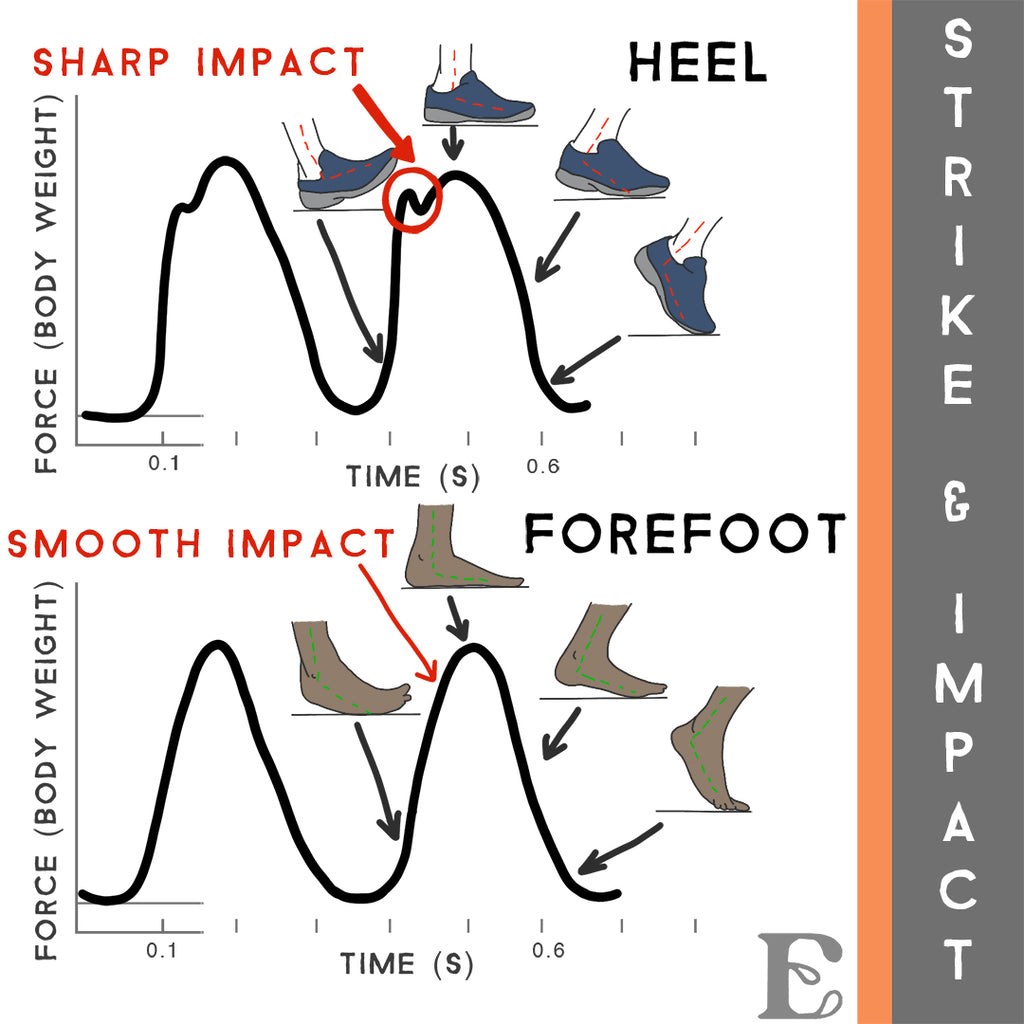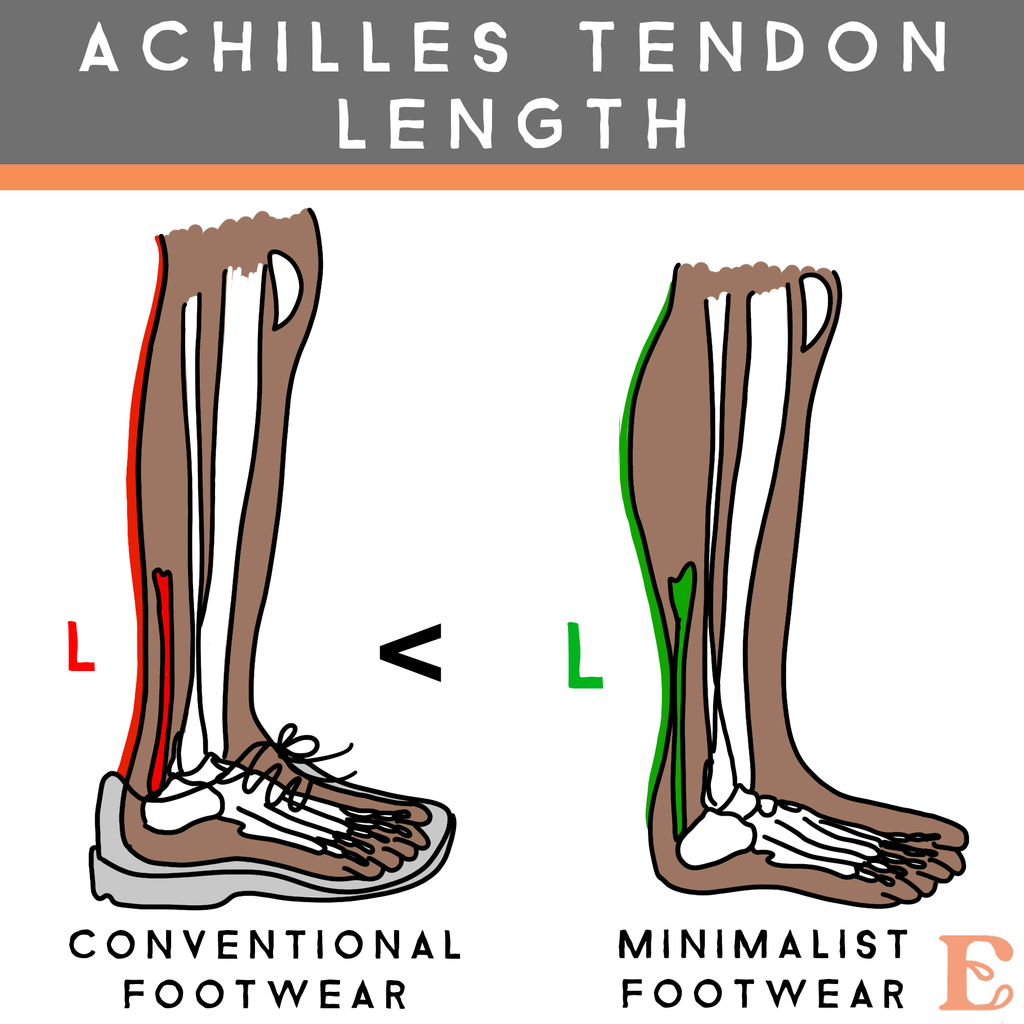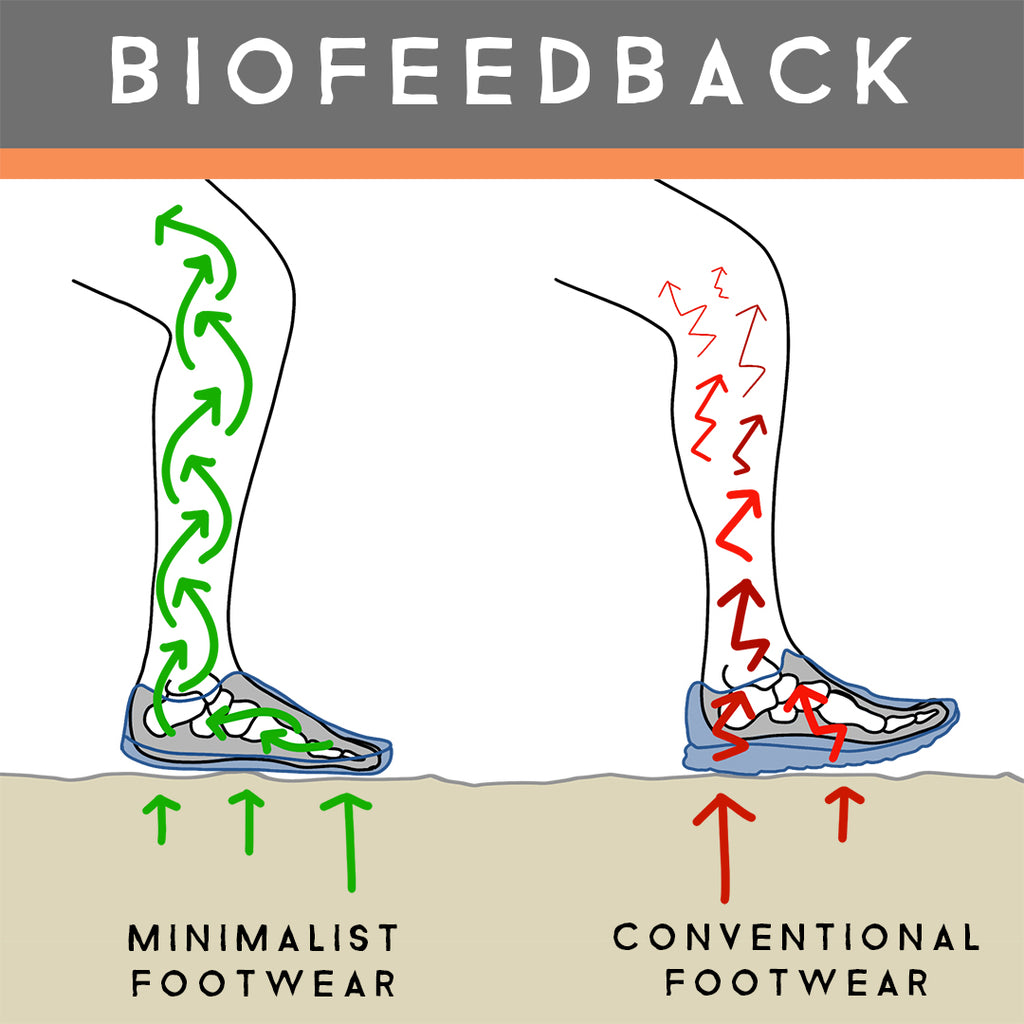Chi Running: Proper Barefoot Form - Forefoot Running
Scientists estimate that humans evolved to run on two feet approximately 2 million years ago. Running would have been a skill crucial to survival... So then, if our bodies evolved to run, why are up to 79% of modern day runners injured each year? [1]
In this article, we are going to break down the strong influence modern running shoes have on your form, and how implementing minimal footwear with a conscious chi running practice can lead to a more natural form with lower incidence of injury. [2]
Modern Running Shoes: The Ugly
“Your legs and feet instinctively come down hard when they sense something squishy underfoot. When you run in cushioned shoes, your feet are pushing through the soles in search of a hard, stable platform.” —Daniel Lieberman, Professor and Chair of the Department of Human Evolutionary Biology, Harvard University
Running shoes may be the most destructive force to ever hit the human foot. Over-engineered footwear dumb down our body’s ability to accurately interact with the environment. The thick cushioned composition of conventional footwear is unnatural, eliciting us to use our feet in ways that would never happen barefoot.
When it comes to running, one of the biggest issues caused by shoes is heel-striking. Wearing thick cushioned soles reduces the biofeedback we receive from our environment, and our ability to perceive and react to terrain accurately is affected. Modern soles—cushioned wedges—promote landing on the heel, which has converted most people who wear them to heel strikers. Heel striking has many detrimental effects on our skeletal system and connective tissue; many conventional runners destroy the cartilage in their knees from chronic acute impact. [3]

Proper Barefoot Form: Chi Running - Forefoot Running
It’s not always possible to run barefoot, but the good news is, you don’t have to run barefoot to achieve proper barefoot form. There has been a resurgence to the ancient artform of running with optimal efficiency and awareness called “Chi Running.” Chi Running advocates minimal footwear to minimize abrasive impact while maintaining natural bio mechanics and feedback from the ground. This pursuit of our evolutionary barefoot form seeks mastery of the forefoot strike. [4]
If you look at the elevated heel of thick conventional running shoes (~1/2” on average) they have a chronic effect on the geometry of our body and the way we interact with the ground. Shoes with an elevated heel make forefoot running much more difficult by changing the pitch at which the foot needs to contact the ground to strike forefoot first. They also shrink the achilles tendon over time by reducing its range of motion and limiting its ability to function properly, which has been shown to increase the incidence of injury. [5]

A key element of a good minimalist shoe is a thin, dense, zero-drop sole. This utilizes the full functionality of the achilles tendon while maintaining feedback from the ground, enabling you to accurately react to the environment. The biofeedback we receive in every stride initiates a cascade of biomechanical reactions to our environment, synchronizing our whole-body shock absorption system. Employing minimal footwear in your chi running practice helps to mimic the biomechanics of going barefoot to achieve gradual evenly distributed impact. Less technology underfoot further facilitates a natural gait pattern by encouraging a higher cadence (more frequent steps), which reduces stress on our bodies and possibility for injury.

Chi Running - Barefoot Form
Imagine walking over foreign terrain, in pitch black darkness, barefoot. The way you would slowly sense your environment with your toes and feet is an exaggeration of proper chi running barefoot form.

- The fifth metatarsal and pinky toe is the first thing to hit the ground.
- Next the remaining toes descend, big toe last.
- Finally the foot reaches the zero point in its landing as the heel kisses the ground, triggering the achilles to retract and propelling the body forward.
- Utilizing the full mechanical advantage of the foot lever, the toes are the last thing to push off the ground as they engage in flexion, continuing to propel the body forward.
- As the foot flies through the air in transit, the toes naturally reach to the sky in extension as they reset and reach for their next step.

Chi Running - Forefoot Running Posture
- Ankles: Seek balance of mobility -and- tension to achieve: optimal contact & traction with the ground -while- maintaining leverage & performance.
- Knees: Positioned above or slightly ahead of the foot at impact to keep the resultant force mostly more perpendicular with the ground.
- Spine: Tall and aligned posture with a slight lean acting as a controlled fall.
- Torsion of the spine to compliment the stride peaks.
- Shoulders: Seated and mobile in their sockets.
- Arms: Loose and acting to counterbalance the mechanical chain.
- Eyes: Actively scanning terrain to establish the path of least obstruction and hazard.
Chi Running: It there a place for the midfoot running strike?
Despite being a popular topic in the ‘proper chi running form’ conversation, the midfoot running strike hasn’t been well-defined. Whether you consider the midfoot strike to be the literal middle of the foot (the arch), or as landing on both your heel and the ball of your foot at the same time, neither definition relates to a stride that can be reliably replicated. [6]
A definition of the midfoot running strike that seems worth considering is landing on the ground with some impact force distributed to the midfoot, than just exclusively the forefoot. Absorbing the impact force while running completely through the forefoot can cause extreme fatigue and stress to conventionally conditioned muscles, tendons, ligaments and bones of the foot. By simply reducing the height of the heel at impact will contribute to a more evenly distributed force between the midfoot and forefoot. The spectrum of a midfoot to forefoot strike is a concept every every chi runner should be conscious of.

Conclusion
You don’t have to teach a fish how to swim, or a bird how to fly. Humankind, a species that has evolved to run, receives more injuries from being on our feet than any other species receives doing the movement they evolved to do. As we now know, this is because modern shoes are teaching us how to run wrong.
Thick footwear starves our body of the full therapeutic value of locomotion, one of our standout evolutionary traits. By adjusting our footwear and practicing healthy running technique, we can gain greater stamina, bone density, exercise efficiency, biomechanical efficiency, and reduce our chances of injury.
By re-learning the most efficient and sustainable way to run with natural, minimal footwear that allows for biofeedback, we can reclaim our evolutionarily evolved gait pattern.




